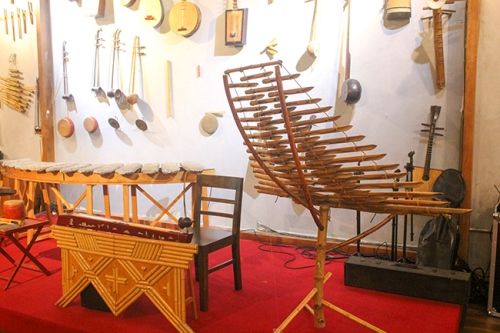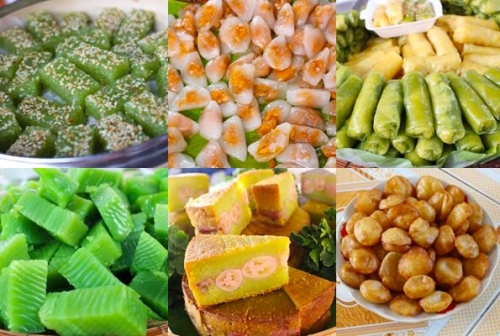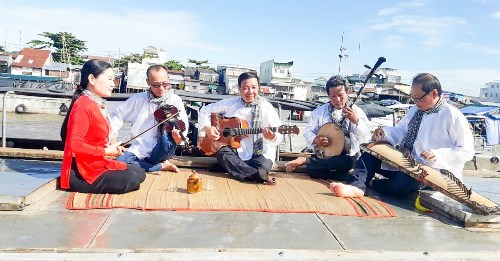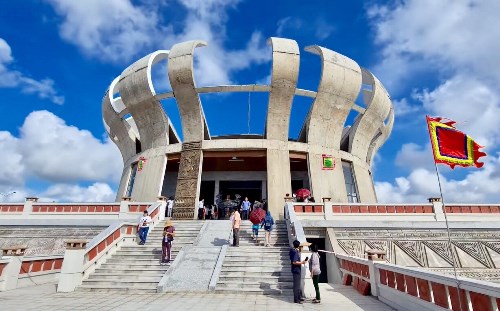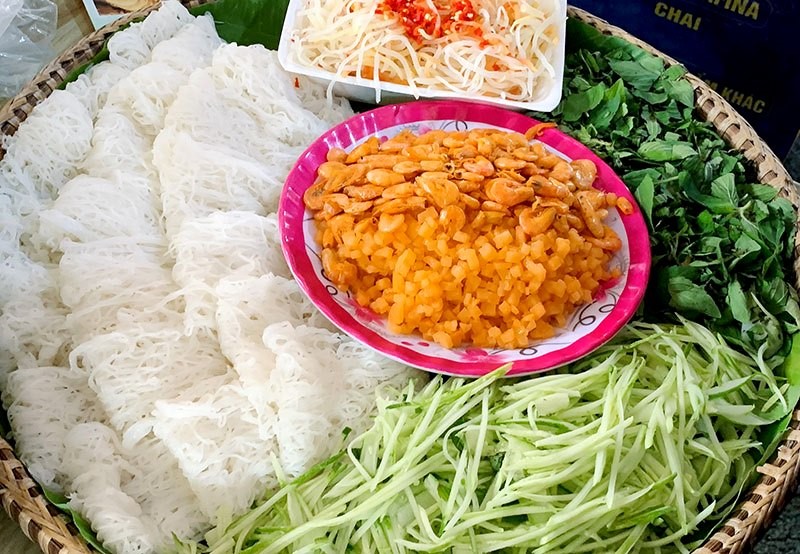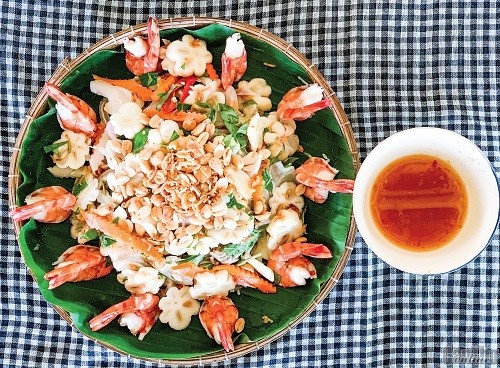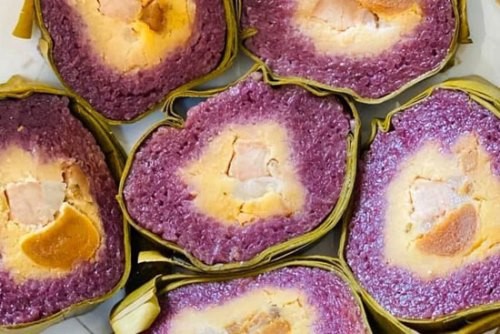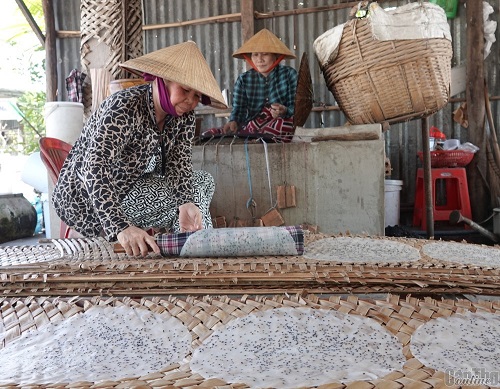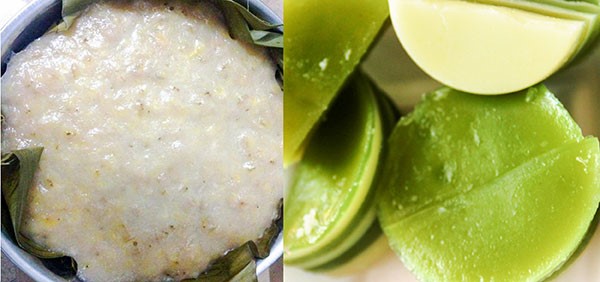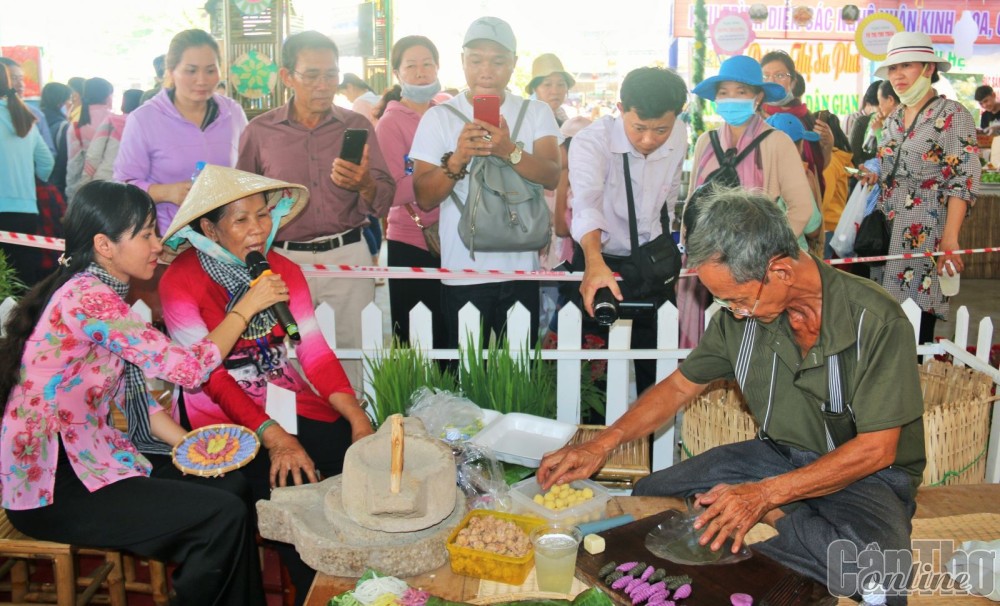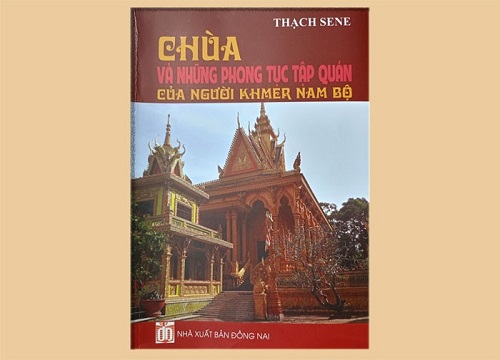
The Temple is the Belief of the Khmer People
According to writer Thach Sene, Khmers follow Theravada Buddhism so they highly revere and respect temples and monks within temples: "The temple is the anchor and belief of all Khmer people, whether male or female, old or young, everyone wants to go to the temple to light incense and pray for blessings for themselves and their loved ones. Because they believe that life in the mundane world is temporary, the other side is Nirvana and the temple is the intermediary, the connection between the two sides".
The author believes that despite living with difficulties, people still voluntarily contribute to building the most beautiful, spacious, and magnificent temple of their village because according to them it is the guarantee for happiness in both present and eternal life.
The writer describes: "When having the opportunity to visit or pass through areas with a large Khmer population, the striking feature to recognize is the temple rooftop. The tall, majestic, and magnificent temple rooftop is hidden among gardens of white thingan trees, palmyra palm trees... With the philosophy of 'Life is Dao, Dao is Life', for thousands of years, the temple has become the spiritual anchor of the Khmer people, the most sacred space of the villagers."
The author affirms that the Khmer temple is closely linked to traditional customs, habits, festivals, forms of sculpture, painting, music, dance, and folk stage arts... which contribute significantly to enriching the culture of the Mekong Delta and national culture in general.
Based on the above overview, writer Thach Sene delves deeper into introducing, describing, and analyzing the meanings of "Khmer Temple Architecture", "Temple and Worship Beliefs", "Temple - Education", "Temple - Cultural Exchange", "Water in Khmer Spiritual Beliefs".
For example, on page 16, the author writes: "Unlike Mahayana Buddhism which worships many Buddhas and other Bodhisattvas, Theravada Buddhism only worships Gautama Buddha alone in the main hall. Therefore, the main altar in a Khmer temple is rather simple, with the statue of Gautama Buddha being the main focus." On page 41: "Khmer people also have the saying 'Lose the language, lose the roots and lose the ethnicity; if religion dissolves then humans must die.' This saying shows the spirit and awareness of preserving the language of the ethnic group. Therefore, in addition to learning the national language, Khmer children must also go to temples to learn the Khmer script”.
Many unique customs, traditions, and festivals
In this chapter, the author helps readers admire 17 different customs of the Khmer people: Marriage customs and flower cutting ceremonies, Ceremonies for Neak Ta and Thala Festival, Sandhill building ceremony, Moon worship ceremony (Ok-Om-Bok), Thanksgiving ceremony, New Year celebration (Chôl Chnăm Thmây), Beliefs in Neak Ta spirits, Procession of Sang Kran, Ordination ceremony, Funeral rites, Burial rites, Farming ceremony, Entering retreat - Exiting retreat ceremony, Thousand hills ceremony, Soul summoning ceremony, Coconut offering ceremony, Kathian robe offering ceremony.
To quote about the "Festival of One Thousand Mountains" (also known as the Bean Phnom Ponn Festival): “This is a festival held to apologize to animals for the faults of humans. According to Khmer folk beliefs, the Khmer people feel that they are at fault for having hunted, chased, and caught animals to eat, protect crops, and protect their health. They fear that after death, these animals will cling to them seeking revenge, and their souls will have to descend into the lower levels of hell. Therefore, every year, the villagers pool their money together to organize the Bean Phnom Ponn festival... The festival lasts 2-3 days under the guidance of monks and novices. First, people choose an empty plot of land to temporarily build a festival house. In front of the festival house is a large open area where a temporary altar is set up with Buddha statues, surrounded by mounds of sand with trees or bamboo poles erected as fences between each mound spaced 1 meter apart. The Khmer people call these 'Thousand Mountains'. They believe that the grains of sand used to build the mounds can absolve one guilty soul in the mortal world. With this meaning, they eagerly build the sand mounds hoping that Buddha will bestow blessings upon all people”.
In chapter 3, the author introduces Khmer cultural art forms, including folk theatrical and dance performances, Khmer folk culture, music, family culture, costumes, and cuisine.
Specifically, the opening section of this chapter piques interest with the question: "Why do Khmer people build snake-shaped boats?". According to the author, southern Khmer people who live in riverine areas have many means of transportation on rivers and streams such as Xa chuong boats, Poc chai boats, Xom pau boats, and especially the Ngo boat which has a snake-like form that Khmer people commonly use for racing in festivals.
Old timers’ story, the origins of the Ngo boat are from 700-800 years ago. Folk songs of Khmer speak of the origins of the Ngo boat: “In the past when settling in this land / The forest was full of ferocious beasts and snakes crawling everywhere / Sailing upon a boat / A simple wooden boat drifting on the river”.
The author relates: "The image of a snake gliding upon the water reflects the Ngo boat, because the form of the Ngo boat is like a real snake. In the past Khmer people had to go all the way to Krachierk in Cambodia to find really big white thingan trees to make Ngo boats. Going to find white thingan trees to make Ngo boats in those days was also very difficult and laborious, with dense forests full of ferocious beasts, and rivers full of crocodiles, with 5-7 people lost each trip to tigers or eaten by crocodiles. To scare away wild beasts, Khmer people shaped the Ngo boat according to the image of a crawling snake." In times of war, the Ngo boat was used as a means of combat and transporting provisions. In peacetime, it was used for enjoyment, entertainment, and demonstrating the strength of the ethnic group, especially during festivals.
In the appendix, this work introduces three places that preserve the cultural values of the Khmer people of southern Vietnam. These are the Khmer Ethnic Culture Museum in Tra Vinh Province, the Khmer Cultural Village and Tourism Site in Tra Vinh Province, and the Khmer Culture Museum in Soc Trang Province. Visitors from near and far, in addition to visiting temples and participating in festivals, will have the opportunity to further contemplate the unique cultural beauty of the Khmer people at these locations.
This book has helped further depict the story of the Khmer people of southern Vietnam within the community of 54 ethnic groups in Vietnam, who mainly reside in Tra Vinh, Vinh Long, Soc Trang, An Giang, Kien Giang, Bac Lieu, Ca Mau and Can Tho... In conclusion, I will share the remarks of Mr. Nguyen Ba Nha, Chairman of Dam Books, the publishing partner for this work: “The book “Temples and Customs of the Khmer People in the Mekong Delta” by author Thach Sene is a literary work but contains scientific content and folk cultural value”.
Source: Can Tho News - Translated by Hoang Dat





